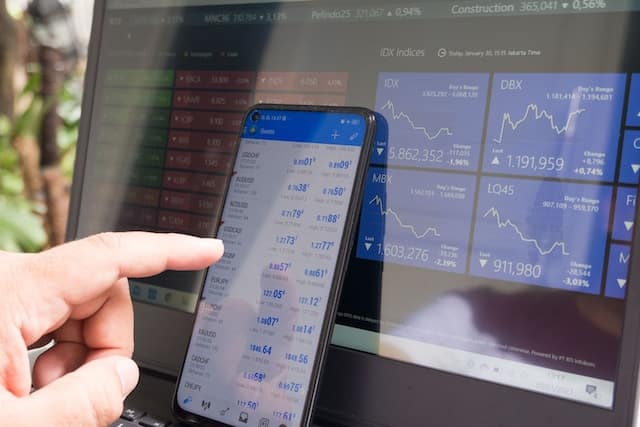Automated trading has become a cornerstone of modern cryptocurrency markets. With 24/7 volatility and hundreds of opportunities appearing every hour, traders turn to software to handle execution, manage risks, and save time. While the benefits of automation are clear, many users discover that trading bots and advanced tools also come with their own set of challenges. Knowing these difficulties in advance can help traders prepare, adapt, and make better use of technology.
3commas.io is one of the most popular platforms providing automation for crypto traders. It offers bots, SmartTrade terminals, portfolio tracking, and risk management features. These tools can improve efficiency, but like any system, they demand proper understanding and management. Below, we explore the most common challenges traders face when using automation and how to navigate them successfully.
Understanding the complexity of setup
Automation platforms are powerful, but they are not plug-and-play. One of the first challenges traders face is the complex setup process. With dozens of settings, ranging from stop-loss and take-profit targets to trailing stops and safety orders—aconfiguring bots can be overwhelming.
Beginners often struggle with:
- Picking the right bot for market conditions (Grid, DCA, or Signal)
- Understanding deviation levels, step sizes, and capital allocation
- Knowing when to adjust settings in response to changing volatility
This steep learning curve is unavoidable. The solution is to start small, learn one tool at a time, and gradually expand to advanced settings only after mastering the basics.
Over-optimization and backtesting pitfalls
Backtesting is a powerful feature that lets traders simulate strategies on historical data. However, a common mistake is over-optimizing bots for past performance. A strategy that looks perfect on last year’s data may collapse when applied to today’s market conditions.
The pitfalls include:
- Ignoring slippage and trading fees in tests
- Designing bots that only work in specific historical conditions
- Becoming overconfident in results that may not reflect future markets
To avoid this, traders should test strategies across different market phases—bullish, bearish, and sideways, while keeping parameters realistic. Paper trading before going live provides a safer way to confirm results.
Security and API risks
Automation relies on connecting accounts through APIs. While platforms like 3Commas emphasize non-custodial security, meaning they don’t hold user funds, the risk lies in misconfigured keys or poor account practices.
Potential security issues include:
- Enabling withdrawal permissions on API keys by mistake
- Failing to use two-factor authentication
- Not monitoring for unusual account activity
The best practice is to give bots trading-only permissions, enable strong security settings, and regularly review exchange connections. Security lapses are rare, but when they occur, the damage can be significant.
Hidden costs and trading fees
Another challenge with automation is the cost factor. Bots execute many trades, which means exchange fees quickly add up. Add in the subscription fees for premium automation platforms, and profits can shrink if costs aren’t managed.
This issue is especially noticeable with high-frequency bots like grid bots. A strategy may look profitable on paper but lose effectiveness once you subtract fees and slippage. Smart traders always factor in:
- Exchange trading fees
- Subscription costs for the software
- Potential spreads and slippage in fast-moving markets
Balancing costs against performance is essential to ensure the strategy remains profitable.
Dependence on risk management
Automation is only as good as the risk management rules set by the trader. Bots can magnify mistakes if protective settings are absent. For example, failing to include a stop-loss can lead to huge drawdowns during sudden crashes. Using excessive leverage on futures bots may also cause liquidation.
To mitigate this, traders must always:
- Define stop-loss and take-profit levels
- Avoid over-leveraging positions
- Diversify across pairs instead of concentrating risk
Bots enforce the rules you give them, but they cannot replace thoughtful risk planning.
Exchange downtime and API errors
Even the best bots rely on exchange APIs to function. When exchanges experience downtime, rate limits, or technical updates, bots can stop executing trades correctly. Traders may see deals stuck, orders not filled, or strategies paused unexpectedly.
This is not always the platform’s fault but a limitation of relying on external services. The solution is to monitor connections, react quickly to exchange notices, and use alerts to identify errors before they cause serious losses.
The illusion of “Set and Forget”
Many traders mistakenly believe automation means they can set a bot once and walk away. In reality, automation requires constant monitoring and adjustments. Market conditions change frequently, and strategies that worked in one cycle may fail in another.
Regular reviews are necessary to:
- Check bot performance and profitability
- Adjust settings for new volatility patterns
- Pause or stop bots when markets behave abnormally
Automation reduces workload, but it doesn’t eliminate responsibility. Treat bots as assistants rather than replacements.
Challenges specific to new users
For newcomers, the challenges multiply:
- Overwhelmed by too many features at once
- Not understanding how capital allocation affects bot performance
- Expecting quick profits without learning how strategies actually work
The best way for beginners to overcome these barriers is to use demo trading accounts, educational resources, and community support. Step-by-step practice builds confidence and prevents costly mistakes.
How to overcome these challenges
Despite the difficulties, automation is still one of the most effective ways to trade crypto. The key is to use it wisely.
Here are practical tips:
- Start small with limited capital and increase exposure gradually
- Use paper trading to learn safely before going live
- Always enable strong security measures such as API restrictions and 2FA
- Review performance regularly and avoid “set and forget” habits
- Factor in all costs to confirm strategies are truly profitable
With these practices, automation becomes a powerful tool rather than a risky gamble.
Why platforms like 3commas.io still lead the way
Around three-quarters of the way into this discussion, it is important to note that platforms like 3commas.io are designed to help traders face these very challenges. They offer backtesting, paper trading, detailed documentation, and strong security frameworks to give users confidence. Features such as SmartTrade, automated bots, and portfolio tracking are backed by education and customer support.
Even so, the responsibility remains with traders to configure tools properly, monitor performance, and maintain risk discipline. Automation works best when combined with knowledge, patience, and consistent review.
Conclusion
Automation tools are shaping the future of crypto trading. They bring discipline, efficiency, and 24/7 coverage to a market that never sleeps. But they also come with hurdles: complexity, backtesting traps, security risks, hidden costs, and the need for ongoing oversight.
Traders who understand these challenges are better prepared to succeed. By starting cautiously, applying risk management, and reviewing strategies often, automation can transform trading from a stressful task into a more controlled and consistent process. Platforms like cryptocurrency software provide the technology, but success depends on how wisely that technology is used.
The above information does not constitute any form of advice or recommendation by London Loves Business for investment, nor is it intended as investment advice, financial advice, or trading advice. Cryptocurrency mining and staking involves risk. There is potential for loss of funds. It is strongly recommended you practice due diligence, including consultation with a professional financial advisor, before investing in or trading cryptocurrency and securities.





Leave a Comment